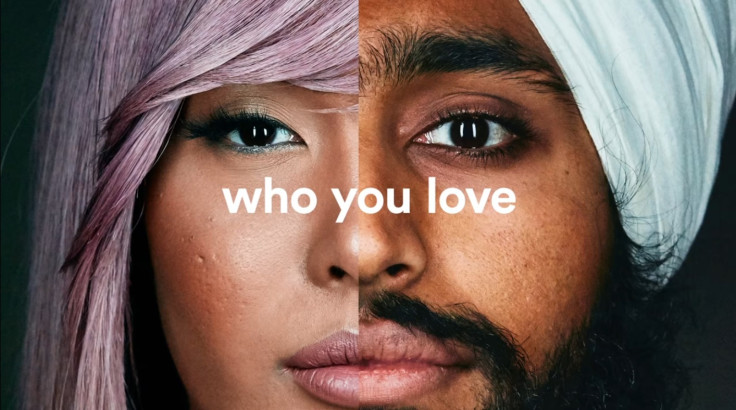Diverse leadership in the UK financial services industry: It's time for action not words
McKinsey & Company states that companies in the top quartile for gender or racial and ethnic diversity are more likely to have financial returns above their national industry medians.

Diversity in the executive leadership of organisations drives improved financial performance, it's a fact. However, while we are seeing a growing number of businesses reporting on the numbers and broadcasting their intent to improve diversity at board level, questions remain about how actual progress will be made. Indeed, there is also a question as to how much of this reporting is driven by a commitment to effect competitive advantage through real change and how much, particularly regarding gender, is being driven by new pay gap regulations and perceived brand risk.
Well publicised research from McKinsey & Company states that companies in the top quartile for gender or racial and ethnic diversity are more likely to have financial returns above their national industry medians. In February, the EY Center for Board Matters identified investors' top priorities for companies in 2018. Based on research with 60 institutional investors, EY's report named 'board composition, with a particular focus on enhanced diversity' as the first priority for 82% of respondents.
Given this groundswell of evidence and opinion, driven by the world's largest financial institutions, it is not surprising to see UK banks seeking to seize the high ground on their diversity strategy. The announcement from Lloyds Banking Group that it wishes its workforce to accurately reflect the diversity of its customer base is to be welcomed, as is its goal to increase overall BAME representation to 10% and to 8% at senior management levels by 2020. Though it should be noted at both levels by 2020 it will still fall short of societal BAME diversity in the UK.
Is their target ambitious enough? Analysis across financial sector companies for our Leadership 10,000 report showed that while 15% of the pipeline, the management roles just below board level, are taken by BAME employees there is a disconnect between them and the executives who sit at board level (8.8%). The implication is that there is a blockage between the pipeline and the board.
Banks need to act now to expand advocacy from internal and external talent pools to develop the leaders of the future. Otherwise they will be competing for the same limited group of candidates with the requisite experience, which fuels elevated levels of group think and does very little to change the diversity and inclusion narrative into actual trust in them as institutions.
We already see in some industries a developing merry-go-round of BAME talent, rather than an intelligently expanded talent pool. It is only by breaking down institutionalised barriers at all levels of organisations for a sustained period that we will create a sufficiently deep pool of talent for BAME executive recruitment.
Focussing on the gender diversity issue, last year's Hampton-Alexander Review established a target of 33 per cent women on FTSE 100 boards by 2020. It found that the number of women sitting on the boards of the country's largest companies has more than doubled since 2011. However, this adds up to only 28 per cent of all board positions; for the 33 per cent target to be met within the deadline set out by the report 40 per cent of all senior appointments made in FTSE 350 companies will have to be filled by women for the next three years.
While, at first sight, this sounds achievable it must be put in context: according to the annual Green Park Leadership 10,000 study, statistically, female representation went backwards in over half of industries.
The reporting of larger organisations' pay gap will no doubt continue to reveal interesting insights into UK banks' intentions for pay and bonus parity. Barclays reported ahead of the March 31<sup>st deadline, for basic pay excluding bonuses there was a median hourly gap of 43.5% at Barclays International, which includes the investment banking business. The figure is 29.9% for holding company Barclays Services and 14.2% for its UK retail bank.
The bank has not produced an overall figure for the three divisions. But since the median pay gap is 14.8% for all financial and insurance companies that have submitted their figures, it appears that some serious action needs to be taken.
It will be interesting to see how other UK financial institutions communicate their strategies for diversity at board level and gender pay parity in the weeks ahead. While it's better to be seen to be 'on a journey' with clear targets to aim for, than completely intransigent, the real proof will come from banks showing clear accountability and action plans being delivered.
The UK has a 'fantastic' opportunity to open itself to the world post-Brexit, but our claims to be outward looking and open to expanded trade with the non-European world are hardly enhanced by closing our own pathways to diverse talent domestically.
Securing investment and credit lines without delivering diversity commitments could become increasingly difficult. Our research amongst institutional investors reveals the majority believe the ethnic composition of company boards will be an important consideration by 2022 when determining investment strategy. They also highlighted the need for a new executive talent strategy to address the issue, existing frameworks simply aren't sufficient and existing HR thinking is systematically failing.
A significant proportion of investment managers highlighted boards currently don't have access to the right talent pools and networks to find candidates outside their usual mono-cultural targets, they also fail to build a pipeline of ethnically diverse future leaders.
Organisations that have future-proofed, by embracing diversity, against a corporate governance or brand backlash may avoid the potentially damaging impact of activist investors and marginalised customers alike. The firms that will thrive are the ones that invest to be ahead of the diversity curve, not lagging behind in the pack.
Raj Tulsiani is CEO of Green Park.





















